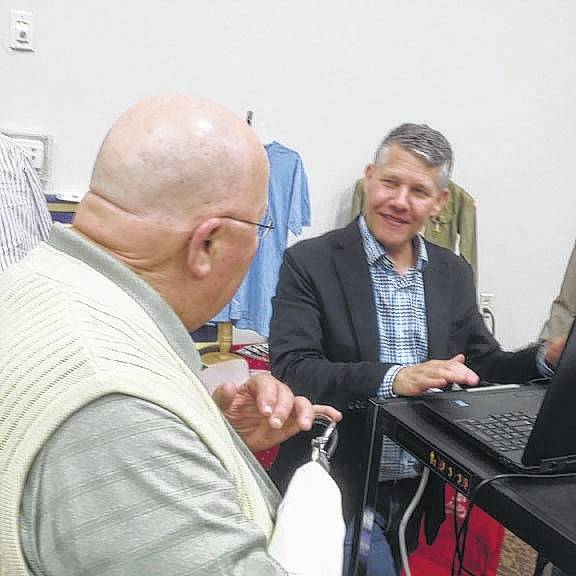
NEW KNOXVILLE — German immigrants who settled in west central Ohio during the early 19th century were part of a mass immigration from Europe, driven by economic and political forces, according to a speaker, Thursday, at the local historical society.
Timothy Anderson, a geography professor at Ohio University, said the saga of the Auglaize County settlers “gives context to the phenomenon of 7 million immigrants from Germany,” beginning in 1800 and lasting till 1921. He told the annual meeting of the New Knoxville Historical Society that “20 percent of the U.S. population can trace its ancestry to Germany.”
Anderson spent a year in Germany while working on his doctoral dissertation at Texas A&M University. And since teaching at Ohio U., he discovered striking similarities between immigration patterns in Ohio and those in his study focused on Westphalia, Missouri.
Residents of Germany faced some of the same forces that Anderson called “push factors” that also drove millions if Irish and English people to leave their homelands for the United States. Those factors included legal and economic barriers to own land while cottage industries were being taken over by the industrial revolution. Also, as Ireland was suffering from the potato famine, there were poor harvests on the European mainland, sparking revolutions against governments that didn’t provide relief.
“Pull factors” luring Europeans to America, Anderson explained, included open access to land ownership — including government give-aways. He quipped, “Advertisements said, ‘Just show up and we’ll give you land.’”
But he said the strongest draw was the economic success or friends and families already in the States. Anderson said, “Rural ‘ethnic islands’ drew settlers to the Upper Midwest and Great Plains.” Popular locations were in Wisconsin, Iowa, Illinois, Missouri, Kansas, Nebraska and the Dakotas.
West central Ohio’s emigrants, however, mostly came by way of Cincinnati, which was among major cities with significant German populations. Others included Milwaukee, Chicago, St. Louis, Baltimore and New York City. Anderson said that of the large numbers of laborers who came to this area from 1825 to 1845 to dig and construct the Miami and Erie Canal, some 75 percent came from eight western counties in Germany.
Religion also played a role in Germans settling in Auglaize County. Anderson said the term “chain migration” is used to chronicle how villages in Germany often linked to villages in the States. Their religious denominations in Europe often determined where they moved. For instance, Catholics predominantly lived in Minster, Lutherans lived in New Bremen and Reformed German Church members lived in New Knoxville.
On a different note, presentations like Anderson’s could be severely affected if President Donald Trump’s recent budget proposal is upheld by Congress, Anderson said. His appearance in New Knoxville was supported by a mix of sponsoring organizations — the National Endowment for the Humanities (NEH), the Ohio Humanities Council and Auglaize County’s “In Motion” grant. The NEH, along with the National Endowment for the Arts and the Corporation for Public Broadcasting, would lose all federal funding unless Congress amends Trump’s budget.
Anderson said, “I understand that budgets are tight, but it would be a shame for (the three agencies) to get picked on. We, as a society, can’t go forward until we know about our past.” Public broadcasting received $445 million in federal funding in the last fiscal year; the NEA and NEH got about $148 million each. Anderson added that Trump’s proposal “is shocking (in) that (the three agencies) account for such a small part of the budget,” which is roughly $4 trillion.
“I can almost draw a parallel between the current rise of American populism being similar to the (economic and political) revolutions in 19th century Europe,” Anderson said. “It’s another example of history repeating itself,” he said.


